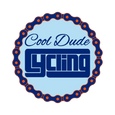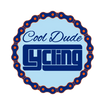The Ultimate Guide to Choosing Cycling Shoes and Pedals
Choosing the right cycling shoes and pedals can transform your ride, boosting comfort, efficiency, and enjoyment. Whether you're a casual weekend rider or a competitive racer, the perfect shoe-pedal combo enhances pedaling efficiency and power transfer. This guide compares popular clipless systems (2-bolt SPD vs. 3-bolt Look/SPD-SL), discusses key factors like fit, stiffness, and ventilation, and recommends well-reviewed products available at retailers like Amazon, Competitive Cyclist, Wiggle, and Chain Reaction Cycles. We’ve incorporated expert reviews from BikeRadar and Cycling Weekly to help you make an informed choice.
Clipless Pedal Systems: SPD vs. Look-Style (3-Bolt)
Clipless pedals allow you to "clip" your shoes into the pedals using cleats bolted to the shoe sole. The two primary systems for road cycling are Shimano’s SPD (2-bolt, common in MTB/gravel) and Look/SPD-SL (3-bolt, road-specific). Each has distinct advantages based on your riding style.
SPD (2-Bolt) Systems
- Features: Small metal cleats attach with two bolts to double-sided pedals, allowing easy clip-in from either side. Recessed cleats and rubber tread make walking easier, ideal for commuters or riders who stop frequently.
- Pros: Versatile for road, gravel, or commuting; sheds mud well; beginner-friendly due to easy engagement.
- Cons: Smaller contact area may cause pressure points on long rides; slightly heavier and less aerodynamic than 3-bolt systems.
- Best for: Beginners, commuters, or riders prioritizing walkability.
Look/SPD-SL (3-Bolt) Systems
- Features: Larger plastic cleats attach with three bolts, offering a wide, stable platform for maximum power transfer.
- Pros: Lightweight, efficient, and stable; ideal for sprinting and hard efforts.
- Cons: Single-sided pedals require practice to clip in; protruding cleats make walking awkward; plastic cleats wear faster.
- Best for: Competitive riders, racers, or those prioritizing performance.
Note: Wahoo Speedplay uses a unique 4-bolt cleat with adjustable float, popular for riders with knee issues. Some shoes support both 2-bolt and 3-bolt patterns, but cleats and pedals must match. Learn more about pedal systems at BikeRadar.
Choosing the Right Cycling Shoes
When selecting shoes, focus on fit, stiffness, ventilation, and closure systems. Here’s how to evaluate each:
Fit & Comfort
Shoes should be snug without pressure points. Brands like Lake offer wide sizes and heat-moldable options, while Specialized provides multiple widths. Try shoes with your riding socks to ensure no toe jamming or pinching.
Tip: The Shimano RC1 is praised for all-day comfort despite its budget-friendly price, according to Cycling Weekly.
Stiffness & Power Transfer
Stiffer soles (often carbon fiber) maximize power transfer. High-end models excel for racing, while mid-tier shoes with nylon/composite soles suffice for casual riders.
Tip: Check stiffness ratings (e.g., Shimano’s 1-12 scale); racers want high stiffness, while recreational riders may prefer slight flex for comfort.
Closure Systems
- Velcro Straps: Simple, durable, and common in budget shoes.
- BOA Dials: Allow micro-adjustments for a precise fit.
- Laces: Stylish and uniform in pressure, but not adjustable mid-ride.
Ventilation & Weather
Shoes with mesh panels or sole vents keep feet cool. For cold weather, use toe covers or less-ventilated shoes.
Tip: Synthetic uppers maintain fit over time, unlike leather, which may stretch.
Matching Shoes and Pedals to Your Riding Style
Casual Riding & Commuting
Best Choice: SPD 2-bolt systems with walkable shoes. Dual-purpose pedals (flat/SPD) work for regular shoes.
Why: Easy clip-in/out and walkability suit stop-and-go riding. Affordable shoes ($80-$120) with nylon soles are comfortable and efficient. Shop options at Amazon.
Enthusiast Road Training & Club Rides
Best Choice: 3-bolt systems. Pair with mid-range shoes ($150-$250).
Why: Balances performance and value with good power transfer for long rides. Look for carbon-composite soles and BOA dials for adjustability. Find these at Competitive Cyclist.
Performance & Racing
Best Choice: Premium 3-bolt systems. Pair with high-end shoes ($300-$450).
Why: Ultra-stiff soles and lightweight pedals maximize efficiency. Replace worn cleats regularly to ensure secure engagement. Browse premium gear at Wiggle.
Top Picks: Shoes and Pedals
Affordable Road Shoes
- Shimano RC1 (~$100): Comfortable, durable, with three Velcro straps. Ideal for beginners, per Cycling Weekly.
- Tommaso Strada 100 (~$80-$120): Includes cleats (SPD or Look Delta), great value for new riders, available at Amazon.
Premium Road Shoes
- Specialized S-Works Torch (~$450): Lightweight, stiff, with dual BOA dials. Top-rated for racing, per Cycling Weekly.
- Shimano S-Phyre RC903 (~$430): Super stiff, well-ventilated, available in wide sizes, available at Chain Reaction Cycles.
Affordable Road Pedals
- Shimano PD-R550 (~$70): Large platform, great value, close to 105 performance, per BikeRadar.
- Shimano PD-M520 (~$50): Reliable SPD pedal for commuters, available at Amazon.
Premium Road Pedals
- Shimano Ultegra PD-R8000 (~$150): Lightweight, durable, near Dura-Ace performance, available at Competitive Cyclist.
- Look Keo Blade Carbon (~$180): Secure clip-in, wide platform, per BikeRadar.
- Wahoo Speedplay Zero (~$230): Double-sided, adjustable float, walkable cleats, available at Wiggle.
Expert Tips and Buyer Feedback
- Cleat Setup: Align cleats so the ball of your foot is over the pedal axle. Use 6° float cleats for beginners to reduce knee strain, per BikeRadar.
- Compatibility: Ensure shoes match pedal cleat type (2-bolt or 3-bolt). Some shoes support both.
- Maintenance: Replace worn plastic cleats (Look/SPD-SL) regularly; metal SPD cleats last longer. Lubricate pedal springs annually.
- Sizing: Brands vary—Specialized may run large, Sidi narrow. Try on or order from retailers with easy returns, per Cycling Weekly.
- Break-In: Start with short rides to adapt to new shoes. Follow heat-molding instructions for brands like Lake.
- Pedal Tension: Set low tension for beginners; adjust as needed.
- Listen to Your Body: Numb toes may indicate tight shoes; knee pain may require cleat adjustment or more float.
Conclusion
Your cycling shoes and pedals should match your riding style—SPD for convenience, 3-bolt for performance. Prioritize fit, ensure compatibility, and fine-tune cleat position. From budget-friendly Shimano RC1 to premium Specialized S-Works Torch, the right combo will enhance your ride. Clip in and enjoy!
For more gear advice, check out Cool Dude Cycling for bike fit tips and accessory guides.













